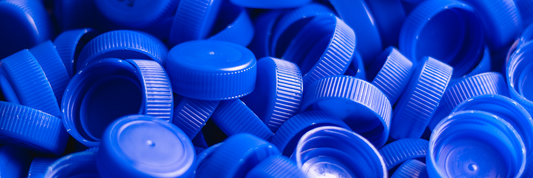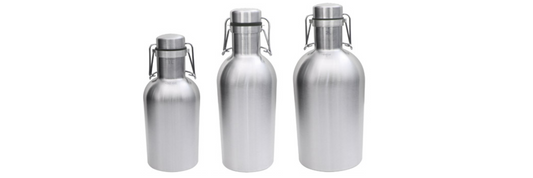Wax paper and parchment paper are both common products in the kitchen, each with its own unique characteristics and uses. However, many people often confuse the two. This article will help you understand wax paper, parchment paper, and the differences between them, so you can use them correctly in your kitchen.
Wax Paper Overview
What is Wax Paper?
Wax paper (also called “waxed paper” or “paraffin paper”) is a type of paper that has been made moisture-resistant and grease-resistant by coating it with wax. It helps to keep moisture in or out, ensuring that watery foods retain their moisture while crispy foods do not become soggy.
Waxed paper is commonly found in rolls, but it is also available in flat sheets, pop-up sheets, bags, or specialty cut papers like patty paper.

Waxed Paper Features
Waxed paper has several features such as:
- Water and grease resistance: The wax coating on the surface of the paper makes it highly resistant to moisture and grease, preventing it from becoming wet or soaked with oils.
- High durability: Waxed paper is quite durable and can withstand physical handling when used for wrapping or storing food.
- Not heat-resistant: Wax paper melts easily when exposed to heat, making it unsuitable for use in ovens or air fryers.
What Is Wax Paper Used For?
Waxed paper is commonly used in cooking due to its non-stick properties and for wrapping food for storage, such as cookies, because it keeps moisture out. It is also used in arts and crafts.

Parchment Paper Overview
What is Parchment Paper?
Parchment paper, sometimes referred to as baking paper, is a cellulose-based paper that has undergone processing to add qualities like non-stickiness, resistance to grease, humidity resistance, and heat resistance.
Parchment paper comes in rolls, rectangular sheets, and circular sheets.

What Is Baking Paper Used For?
Parchment paper is widely used as disposable non-stick baking and cooking paper. Its surface keeps food from sticking, it is greaseproof and suitable for a variety of uses, and it is extremely heat-resistant, working at temperatures as high as 220°C.
What Is The Difference Between Wax Paper And Parchment Paper?
Here's a comparison table highlighting the key differences between wax paper and parchment paper:
|
Feature |
Wax Paper |
Parchment Paper |
|
Coating |
Coated with wax |
Coated with silicone |
|
Heat Resistance |
Not heat-resistant; melts at high temperatures |
Heat-resistant; can withstand high temperatures |
|
Usage in Baking |
Not suitable for baking; may smoke or catch fire |
Ideal for baking; prevents sticking and is oven-safe |
|
Usage for Freezing |
Suitable for freezing; prevents freezer burn |
Suitable for freezing; similar function |
|
Moisture Resistance |
Highly resistant to moisture and grease |
Resistant to moisture; less effective than wax paper |
|
Durability |
Durable for wrapping and storing food |
Durable for baking and cooking; withstands physical handling |
|
Appearance |
Generally comes in rolls, flat sheets, or specialty cut papers |
Usually available in rolls or flat sheets |
|
Recyclability |
Not generally recyclable due to wax coating |
Often recyclable, depending on local facilities |

Wax Paper vs Parchment Paper for Baking
Wax paper is not suitable for baking; parchment paper is. While parchment paper is safe to use in the oven, wax paper can melt and pose a fire risk.
Should You Choose Wax Paper Sandwich Bags Over the Plastic Bags
Waxed Paper vs Parchment Paper for Freezing
For freezing, you can use both parchment paper and wax paper. For instance, utilize precut sheets as partitions between stacked pieces of meat or fold the paper to wrap fruits and vegetables. In order to manage inventory, you can also label your foods and keep track of what you are chilling by writing with a permanent marker on either kind of paper.
While the coatings on either of these papers are unaffected by cold temperatures, some pros find that wax paper works better in the freezer due to its cost-effectiveness, saving parchment paper for special occasions only.
Waxed Paper vs Parchment Paper for Food Preparation
Parchment and wax paper are also helpful in a variety of food preparation procedures. Either kind of paper works well for quick and simple cleanup because you can place it down on your work surfaces and throw it away when you're done. When working with sticky foods like ground meat, dough, or pasta, this is extremely helpful. Simply lay a piece of wax or parchment paper on your work surface and sift the dry ingredients over it if you are preparing a recipe that calls for them. Next, carefully remove the paper and pour the ingredients into your mixture using the funnel.
Wax Paper vs Parchment Paper Frequently Asked Question
Can I Use Wax Paper In An Air Fryer?
No, you cannot put wax paper in an air fryer. Waxed paper is very sensitive to heat, and since the cooking process in an air fryer relies on hot air, they do not mix well together.
What Type of Containers Can You Put in An Air Fryer?
Can I Use Parchment Paper Instead Of Waxing Paper?
You can use parchment paper instead of wax paper in many cases. Parchment paper is more heat-resistant and suitable for baking and cooking, whereas wax paper does not handle high temperatures well and can melt when exposed to heat.
Conclusion
Wax paper and parchment paper each have their own specific uses in the kitchen. Understanding the characteristics and applications of each type will help you choose the right paper for your needs, thereby enhancing both efficiency and safety in food preparation and storage.
Related Articles:









